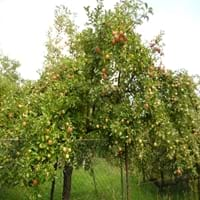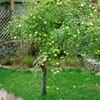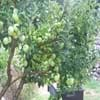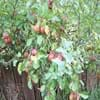Life Span
Perennial
Annual
Origin
Eastern Europe, Southern Europe, Russia/Siberia, Southern Asia, Western Asia
South Africa
Types
Not avaialable
Shasta Daisy
Gloriosa Daisies
Painted Daisy
Pyrethrum Daisies
Number of Varieties
Not Available
Habitat
Hillside, Mountain Slopes, Temperate Regions
gardens, Grassland
USDA Hardiness Zone
3-8
10-11
Sunset Zone
A1, A2, A3, 8, 9, 10, 11, 12, 13, 14, 15, 16, 17, 18, 19, 20, 21, 22, 23, 24
8, 9, 12, 13, 14, 15, 16, 17, 18, 19, 20, 21, 22, 23, 24
Habit
Oval or Rounded
Clump-Forming
Flower Color
White, Light Pink
White, Yellow, Blue, Purple, Orange, Pink, Magenta
Flower Color Modifier
Bicolor
Bicolor
Fruit Color
Yellow, Red, Yellow green
Not Available
Leaf Color in Spring
Green
Green, Blue Green
Leaf Color in Summer
Green
Green, Blue Green
Leaf Color in Fall
Green, Light Yellow, Brown
Green, Blue Green
Leaf Color in Winter
Light Green
Light Green
Leaf Shape
Oblong
Arrowhead
Plant Season
Spring, Fall
Spring, Summer, Fall
Sunlight
Full Sun, Partial Sun, Partial shade
Full Sun
Type of Soil
Clay, Loam, Sand
Loam
The pH of Soil
Acidic, Neutral
Neutral
Soil Drainage
Well drained
Well drained
Bloom Time
Spring, Late Spring
Late Spring, Early Summer, Summer, Late Summer, Early Fall, Fall
Tolerances
Drought
Drought
Where to Plant?
Ground
Ground, Pot
How to Plant?
Grafting, Seedlings, Transplanting
Seedlings, Stem Planting
Plant Maintenance
Medium
Medium
Watering Requirements
Medium
Allow soil to be completely dry in between waterings, It cannot sustain wet-feet, Keep the ground moist but not water-logged, Water in morning to avoid prompting diseases, Water twice a day in the initial period
In Summer
Lots of watering
Lots of watering
In Spring
Moderate
Moderate
In Winter
Average Water
Average Water
Soil pH
Acidic, Neutral
Neutral
Soil Type
Clay, Loam, Sand
Loam
Soil Drainage Capacity
Well drained
Well drained
Sun Exposure
Full Sun, Partial Sun, Partial shade
Full Sun
Pruning
Remove damaged leaves, Remove dead branches, Remove dead leaves
Cut or pinch the stems, Prune regularly, Remove deadheads
Fertilizers
All-Purpose Liquid Fertilizer
All-Purpose Liquid Fertilizer
Pests and Diseases
Black rot, Leaf spot, Scab
Red blotch
Plant Tolerance
Drought
Drought
Flower Petal Number
Single
Single
Foliage Texture
Medium
Medium
Foliage Sheen
Matte
Not Available
Attracts
Birds
Bees, Butterflies
Allergy
Mouth itching, Throat itching
Not Available
Aesthetic Uses
Not Used For Aesthetic Purpose
Beautification, Bouquets, Showy Purposes
Beauty Benefits
Not Available
Not Available
Environmental Uses
Air purification
Air purification
Medicinal Uses
Cancer, constipation, Diabetes, Diarrhea, Dysentry, Fever, Heart problems, Tooth ache
Cold, Cough, Stomach pain
Part of Plant Used
Fruits
Flowers
Other Uses
Used As Food, Wood is used for making furniture
Showy Purposes, Used as Ornamental plant
Used As Indoor Plant
No
Yes
Used As Outdoor Plant
Yes
Yes
Garden Design
Edible, Feature Plant, Fruit / Fruit Tree, Topiary / Bonsai / Espalier
Bedding Plant, Container, Cutflower, Foundation, Groundcover, Hanging Basket, Mixed Border, Rock Garden, Wall
Botanical Name
MALUS domestica 'Cortland'
OSTEOSPERMUM
Common Name
Apple, Cortland Apple, Red Eating Apple
African daisy or Blue-eyed Daisy
In Hindi
cortland apple
अफ्रीकी डेज़ी
In German
Cortland Apfel
African Daisy
In French
Cortland (pomme)
marguerite africaine
In Spanish
manzana Cortland
margarita africana
In Greek
Cortland μήλο
Αφρικανική μαργαρίτα
In Portuguese
Cortland da maçã
africano margarida
In Polish
Cortland (jabłoń)
Gerbery
In Latin
cortland apple
African primula
Phylum
Magnoliophyta
Anthophyta
Class
Magnoliopsida
Magnoliopsida
Family
Rosaceae
Asteraceae
Clade
Angiosperms, Eudicots, Rosids
Angiosperms, Asterids, Eudicots
Tribe
Not Available
Calenduleae
Subfamily
Not Available
Asteroideae
Number of Species
Not Available
Not Available
Season and Care of Cortland Apple and African Daisy
Season and care of Cortland Apple and African Daisy is important to know. While considering everything about Cortland Apple and African Daisy Care, growing season is an essential factor. Cortland Apple season is Spring and Fall and African Daisy season is Spring and Fall. The type of soil for Cortland Apple is Clay, Loam, Sand and for African Daisy is Loam while the PH of soil for Cortland Apple is Acidic, Neutral and for African Daisy is Neutral.
Cortland Apple and African Daisy Physical Information
Cortland Apple and African Daisy physical information is very important for comparison. Cortland Apple height is 370.00 cm and width 460.00 cm whereas African Daisy height is 15.20 cm and width 45.70 cm. The color specification of Cortland Apple and African Daisy are as follows:
Cortland Apple flower color: White and Light Pink
Cortland Apple leaf color: Green
African Daisy flower color: White, Yellow, Blue, Purple, Orange, Pink and Magenta
- African Daisy leaf color: Green and Blue Green
Care of Cortland Apple and African Daisy
Care of Cortland Apple and African Daisy include pruning, fertilizers, watering etc. Cortland Apple pruning is done Remove damaged leaves, Remove dead branches and Remove dead leaves and African Daisy pruning is done Cut or pinch the stems, Prune regularly and Remove deadheads. In summer Cortland Apple needs Lots of watering and in winter, it needs Average Water. Whereas, in summer African Daisy needs Lots of watering and in winter, it needs Average Water.





